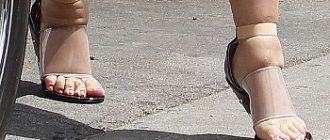How to choose a pool?
This is where you should start, because your comfort and learning productivity will largely depend on the pool itself.
To begin with, pay attention to such parameters as the length of the swimming bowl, the number of lanes, their width, and the depth of the pool. There are two standard lengths - 25 meters and 50 meters (“short” and “long” water). The number of tracks can vary from 3 to 10, and the width of each should be 2.25-2.5 meters. The depth of the pool varies widely - from 1.5 to 6 meters.
The pool can be a separate sports complex, or it can be located in a fitness center. In the first case, it will be more in line with the standards and regulations applicable to swimming pools, and in the second, everything depends on the fitness center, which has the right to call a bowl of any size a pool.
Let's look at the features so you can compare both options.
How useful is learning infant swimming? A doctor and hydro-rehabilitation specialist answers your questions.
Number of views: 9,522
Infant swimming training - is this activity necessary for your baby? It is well known that the ability to swim is a useful skill; doctors advise that children be sure to sign up for the pool if there are no contraindications. But is it necessary to teach a baby to swim if there are benefits from such early lessons? This and other questions were answered by Hotline’s Q&A guest, a doctor, hydro-rehabilitation specialist, and early swimming instructor.
Question: Is it true that children who learn to swim early walk worse later?
Answer: Indeed, occasionally there is an opinion that teaching infant swimming promotes the formation of different neural connections than those that are formed during the formation of walking skills, so swimming in the pool can supposedly delay the age at which the baby begins to walk. However, in practice, one can see the opposite effect - all children who engage in early swimming, on the contrary, develop faster intellectually and physically, due to richer sensory-motor experience. And think about it – how long does a child spend in the pool? Most often 2 times a week for 30 minutes. Is it really possible that the rest of the time of “land” cognition of the world will not be enough for the formation of stable motor skills that ensure getting up and walking?
Question: We are 2 months old, our baby was diagnosed with dystonia, can we start learning infant swimming?
Answer: The term “dystonia” means a violation of the mechanism of mutual regulation of the tone of various muscles among themselves. When this mutually coordinated regulation is disrupted, this is what is called dystonia. The fact is that in the first year of life, especially in the 1st months, children are normally very dystonic, since the formation of interaction and regulation of the tone of various muscle groups will occur up to 2 years, and most actively in the first 12 months. You can often see a certain one-sidedness: movements of the limbs of one half of the body may be more active, the tone is slightly higher. This is typical for children under 6 months. As the brain and nerve pathways develop, as well as motor skills, symmetry of movements is formed. Massage courses and early swimming have a very positive effect on the establishment of correct nerve connections, so swimming is not only possible, but also useful in your situation.
Question: My son was diagnosed with hip dysplasia; he is now 4 months old and wears splints. I want to teach my son to swim, but I doubt whether the water will harm us, is it too late now?
Answer: Early swimming is often recommended in the complex treatment of mild to moderate acetabular dysplasia of the hip joint. In a situation where the baby is prescribed splints, we are talking about a more pronounced degree of dysplasia, so I would recommend waiting until the head of the femur in the acetabulum is stabilized, the splints are removed, and only after that begin water practices, which can help go through the rehabilitation period. As for the age to start classes, it’s never too late; you can start at any age.
Question: There is always chlorinated water in the pool, isn't it harmful to the child, won't it dry out the skin?
Answer: Recently, new standards for water disinfection in children's pools have been adopted, according to which the required chlorine content in pool water has been significantly reduced. Previously, it ranged from 0.5 to 1.2 mg/l, now, respectively, from 0.3 to 0.5 mg/l, which practically corresponds to the chlorine content in tap water, so swimming in the pool in this regard is no more dangerous than bathing in a home bath.
Question: Will the baby be scared when diving, because he can get scared without his mother? What if this turns into a lot of stress?
Answer: The task of an early swimming instructor is to prepare the child for the first dive as gently as possible, so that the child not only does not feel discomfort, but even experiences the joy of new experiences. It is not at all necessary to give your baby to a coach; it is much better to go for infant swimming lessons in a group where the mother will be next to the baby all the time. This practice will only increase the emotional closeness between mother and baby and will help you approach the first dive with ease and comfort under the strict guidance of the instructor. As a rule, there are up to 5 – 6 mother-child pairs in groups, this allows you to find an individual approach and devote sufficient time to each child for adaptation.
Question: When is the best time for a baby to start swimming in 8 months?
Answer: You can start early swimming from the moment the umbilical wound heals at any age.
Question: How does swimming affect the lungs? I read that in swimming pools we all breathe chlorine fumes, and they have a harmful effect on the human respiratory tract.
Answer: Indeed, chlorine, interacting with organic contaminants in water, forms harmful intermediate compounds that irritate the skin and mucous membranes. However, as I already answered, the standards for the chlorine content in water in children's pools have been significantly reduced, so swimming in a pool is no more dangerous than in a home bath. In addition, on the part of pool visitors, observing the rules of personal hygiene (mandatory shower before entering the bowl) will significantly reduce the penetration of organic substances (for example, microscopic skin scales) into the pool water, and, accordingly, the formation of intermediate chlorine compounds.
Question: Is it true that babies who swim from birth become accustomed to the wrong body position in the water, and then it is very difficult to retrain them?
Answer: The baby is taught to have an incorrect body position by wearing swimming rings around the neck or by an illiterate person working with the baby. With the right support, kids immediately learn the correct body position and over time move on to conscious, correct movements in the water and do not need relearning.
Question: Are there any categorical contraindications to early swimming, so that it’s absolutely forbidden?
Answer: Contraindications are: • Severe heart defects • Various types of infections (ARVI, intestinal infections, pneumonia, fever of unspecified etiology, active tuberculosis) • Neurological pathology, which is accompanied by convulsive syndrome, hydrocephalus • Serious disorders of the musculoskeletal system that require fixation of the limbs (for example, dislocations of the hip joints, fractures), osteomyelitis • Open purulent wounds, strepto- and staphyloderma.
Question: What should be the temperature of the water and air in the pool so that the baby is comfortable and does not catch a cold later?
Answer: In accordance with current sanitary rules and regulations, the air temperature in the halls with bowls of children's pools should be +31 °C - +32 °C (1 °C - 2 °C above the water temperature), in changing rooms and showers +25 ° C - +26 °C. This temperature is absolutely comfortable for most babies, especially if at home the temperature of the water when swimming is gradually reduced from +36 °C to +30 ° - +32 °C.
Question: Where to start learning infant swimming at home, at what age, and in what position is it best to hold the baby?
Answer: Bathing in a large bath can begin as soon as the umbilical wound heals. The water temperature for the first swim should be +34 ° - +36 °C, gradually it is better to reduce the temperature to +30 ° - +32 °C for hardening and preparing for classes in the pool. There are several simple “bath” supports, one of which looks something like this: the baby is on his back, the parent’s palm supports the baby’s head, the baby’s body moves freely in the water. The head should be immersed in water, without fear of getting the ears wet, just make sure that water does not get into the nose and mouth. The second of the most common supports is “on the stomach”, the parent supports the baby’s chin with his palm. By two to three months, it is better to move your activities to a larger “body of water” - a swimming pool, since the small space of the bathroom limits the child’s motor potential.
Question: What reaction from a child indicates that it is better to stop learning infant swimming or slow down? After trying to teach us to hold our breath by dousing, we fall asleep restlessly and sometimes it seems that the pupils do not react to light as well. We are 4 weeks old. How quickly can he adapt to being underwater?
Answer: Under no circumstances should you force diving if the baby does not like this process. Crying, anxiety, restless sleep are signs that parents are in a hurry. Try to do everything as gently as possible, without pressure, do not water it directly on your face, start by watering it on your shoulder, temple, cheek, first without immersion, you can even invite a specialist to your home. Don’t be afraid of the fading of the breath-holding reflex; you can teach a baby to dive at any age. The main thing is not to develop a negative attitude towards water in your baby. From two months you can move to the pool under the supervision of an instructor.
Question: What should the water temperature be at the beginning of training and how should it be changed over time?
Answer: The water temperature for the first swim should be +34 ° - +36 °C, gradually it is better to reduce the temperature to +30 ° - +32 °C for hardening and preparing for classes in the pool.
Question: My eldest child and I went for a swimming club in the garden pool at 1.6. Now, waiting for the second miracle, I’m asking myself whether it’s worth starting “swims” before the baby is three months old and where to organize infant swimming training: at home in the bathroom or better in the pool with a specialist?
Answer: You can start swimming lessons with a newborn from the moment the umbilical wound heals in the home bathroom, since there is a comfortable, familiar environment there. However, by two to three months it is better to move water practices to the pool, since the small space of the bathroom limits the child’s motor potential.
Question: Please tell me, our 1 year and 3 month old child would like to start taking him swimming, is it worth starting so early? At what age is it best and how to do it correctly?
Answer: You can start early swimming from the moment the umbilical wound heals at any age. Early swimming is a unique opportunity to improve your health, teach a vital skill, build basic confidence in the world and, of course, get indescribable pleasure! I think the best format for starting classes at your age is group classes in a mother-baby pool under the guidance of an instructor. In this case, the child feels comfortable next to a loving parent, which not only allows him to gently and joyfully enter the world of water practices, but also strengthens trust and emotional closeness between mommy and baby.
Question: What time of day is best to take your child to the pool? (baby 6 months)
Answer: It is important that by the time of class the child is well-rested and not hungry. The best thing to do is to feed the baby after waking up and start working out an hour later. The time of day is not important.
Question: How many times a week is enough to go to the pool at 6 months so that you don’t forget your skills?
Answer: The optimal frequency of early swimming is 2 times a week.
Question: We are changing the pool, the water temperature in the previous one was 32-34, and in the new one 29-30, how to adapt the child to such a change?
Answer: In your situation, you can use a gradual decrease in temperature when swimming in a home bath, then the transition to swimming in a pool with a lower temperature will be almost unnoticeable.
Question: How long is enough time to swim with a child? (6 months)
Answer: For a six-month-old baby, a twenty to thirty minute lesson is enough.
Question: Is it possible to combine a swimming pool and a massage on the same day, and if so, how long, and both?
Answer: You can, I would recommend dividing these activities into halves of the day, for example, a swimming pool before lunch, and a massage after, or vice versa. The duration of classes in the pool is 30 minutes, massage - depending on the situation, a massage therapist will advise you.
Question: At the same time, kindergarten children began to be brought in with infants, is it worth bringing a child in such a situation?
Answer: Typically, early swimming classes in the pool are graded by age. Infants study in their own groups, and kindergarten-aged children study in their own, since different exercises and teaching technologies have been developed for different age groups. You should check with the pool administration whether it is possible to divide different age groups into more homogeneous ones, or look for a pool that is more thoughtful in terms of optimizing the flow of children.
Question: Is it necessary to teach a child to dive? How beneficial is this for his health and development? At what age should I start?
Answer: Learning to swim as an infant does not set learning to dive as an end in itself; our main goal is to improve health, develop a positive attitude and strengthen emotional intimacy and trust with a loving adult. You can do without learning to dive, but in such a situation you should not expect independent swimming in preschool age. However, with a gentle, friendly approach, if the coach and mother give the baby as much time as he needs to adapt, diving will easily and naturally become part of children’s favorite pastimes and will also be an excellent tool for learning to swim independently.
Question: How often and for how long can I go swimming with my baby? Will learning to swim as an infant be stressful for your baby?
Answer: if we are talking about initial classes in the home bathroom - every day, 20-30 minutes. The optimal frequency of classes in the pool is 2 times a week, the duration is the same. Since the water environment is natural for the baby, it will not be stressful, the main thing is to ensure the correct temperature (36 degrees for the first bathing with a gradual decrease to 30-32) and behave gently, non-violently towards the baby, in no way forcing events.
Question: I want to start going to the pool with my baby, we are 7 months old. What should you pay attention to when choosing a pool and trainer?
Answer: Many factors influence the choice of pool. The first thing you can pay attention to is the room, it should be clean and bright. Check with the administration about the method of water disinfection and purification and the frequency of replacement.
In modern swimming pools, water is continuously filtered, pH and the content of chlorine and ammonia compounds are indicated every two hours, and once a month water samples are sent to the sanitary station for bacteriological and parasitological examination. Based on the results of these tests, the water is replaced if necessary. Low doses of chlorine, ultraviolet light and active oxygen are used for disinfection. When choosing a coach who will teach infant swimming, inquire about his education and evaluate his teaching talent. Sports achievements are especially relevant for a coach teaching older children over 5 years old, since the basics of swimming styles, technicality, and professional skill are so important to them. For infants, a coach with a medical education and a gentle, attentive approach are more interesting, since in infant swimming, the coach’s knowledge of the anatomical and physiological characteristics of newborns, charisma and attentive attitude are more important. Based on the age of the child, evaluate what you want to get - sports or health promotion. Also, when attending group classes, check the number of mother-baby pairs in the group. Each child in groups of up to 6 pairs will receive sufficient attention from the trainer.
Question: Is it possible to bathe a baby in chlorinated water?
Answer: What kind of chlorinated water are we talking about? We all bathe our babies in chlorinated water because our tap water contains chlorine compounds.
Question: They offer a swimming pool in the garden at 3 years old, is it worth going, does it help harden the child? Is it possible to drive with a runny nose or cough?
Answer: A swimming pool definitely helps to recharge the body; a garden pool is a good option that saves mom’s time (there is no need to transport her somewhere else). But with manifestations of ARVI, you should not take your baby to the garden or to the pool; think about the safety of other children.
Question: At what age is it optimal to start learning infant swimming?
Answer: Bathing in a large bath can begin as soon as the umbilical wound heals. The water temperature for the first swim should be +34 ° - +36 °C, gradually it is better to reduce the temperature to +30 ° - +32 °C for hardening and preparing for classes in the pool. It is advisable to move to the pool from 2-3 months of age, when the bathroom becomes a bit crowded.
Question: We swim laps in the bathroom at home and at a certain moment the child begins to be afraid and cry. Is it better not to offer such procedures anymore or to wait and offer them again?
Answer: I already answered live that I recommend limiting the use of a neck circle as much as possible, since it accustoms the baby to an incorrect position of the head. Any negative reactions indicate that you need to change tactics. Assess the correct water temperature, stay in an emotionally upbeat mood, don’t be nervous, laugh with your baby - stop swimming and play a fun game!









